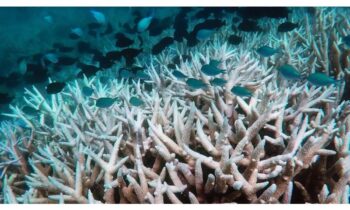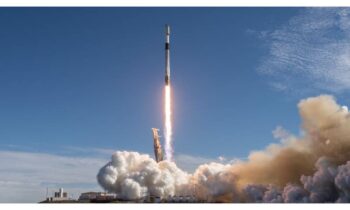Our solar system’s planets are encircled by a massive bubble of charged particles that the Sun continuously releases. The heliosphere is this bubble, and the edge of it is where our solar system ends.
Thus, we must first figure out how to get through the heliosphere if we are to leave our solar system and visit other stars.
Remarkably, a group of scientists thinks it has found the best way out of this enormous bubble.
Planets, astronauts, satellites, and other bodies are all shielded from harmful cosmic radiation by the heliosphere. Scientists are still unclear about its size and form, though.
All they say is that the heliosphere is the area immediately affected by the Sun. There are those who say the bubble is spherical, those who say it is croissant-shaped, and many others who think it resembles a bullet or a beach ball.
The inability to determine an object’s precise shape while inside it is the reason for this perplexity.
The study’s first author, Sarah A. Spitzer, a research fellow at the University of Michigan, “We are like goldfish trying to understand the fishbowl from the inside,”
To illustrate how interstellar probes can exit the heliosphere and observe it from the outside, a large number of experts from all around the world, including the authors of the paper, have been creating mission proposals.
“A future interstellar probe mission will be our first opportunity to really see our heliosphere, our home, from the outside, and to better understand its place in the local interstellar medium,” Spitzer continued.
Depicting our Journey Out of the Heliosphere
Mission designs include comprehensive information regarding the cargo, trajectories, and vehicle needed.
It will eventually emerge from the bubble, according to a 2021 mission concept paper, if the probe follows “a probe trajectory near 45 degrees off the nose of the heliotail, or the front of the sun’s directional motion.”
Nevertheless, the current study asserts that a probe would need to go over the edge of the heliosphere’s tail end in order to leave the heliosphere.
They evaluated six probe trajectories from noseward to tailward and discovered that the probe departs through the tail to produce the most output and a clear picture of the heliosphere form.
“If you want to find out how far back your house extends, walking out the front door and taking a picture from the front sidewalk is likely not your best option. The best way is to go out the side door so you can see how long it is from front to back,”Marc Z. Kornbleuth, study author and a research scientist at Boston University, stated.
NASA launched Voyager 2 and Voyager 1 in August and September of 1977, respectively, to explore interstellar space. These spacecraft crossed the heliosphere for the first time as a result of the mission’s success.
Despite being designed to last for just five years, the Voyager probes are still in operation and, as of March 2024, they are roughly 15 billion miles (~24 billion kilometers) beyond Earth.
Nevertheless, they are unable to provide any information about the heliosphere since they are unable to detect the plasma activity of our Sun. NASA’s approval of an interstellar probe mission is desired by many scientists for this reason.
According to a mission concept report from the Applied Physics Laboratory at Johns Hopkins University, mankind ought to strive for a probe with a 50-year lifespan.
Such a probe might span 30 to 90 billion miles of interstellar space and yield important information about the heliosphere.



